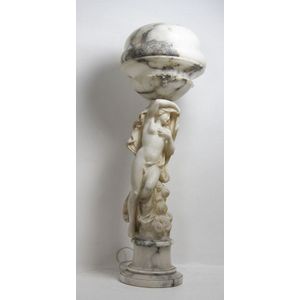Qing Dynasty Silver Incense Holder with Dragon and Tiger
You must be a subscriber, and be logged in to view price and dealer details.
Subscribe Now to view actual auction price for this item
When you subscribe, you have the option of setting the currency in which to display prices to $Au, $US, $NZ or Stg.
- Qing Dynasty - The Qing Dynasty was the last imperial dynasty of China, ruling from 1644 to 1912. It was established by the Manchu people, who originated from the northeastern region of China. The Qing Dynasty was preceded by the Ming Dynasty and followed by the Republic of China.
- Ming Dynasty - The Ming Dynasty was a ruling dynasty of China from 1368 to 1644. It succeeded the Yuan Dynasty and preceded the Qing Dynasty. The Ming Dynasty was established by Zhu Yuanzhang, a former Buddhist monk who became a rebel leader and eventually overthrew the Mongol Yuan Dynasty. During the Ming Dynasty, China experienced a period of relative stability and prosperity. The government was centralized and bureaucratic, with the emperor at the top of the hierarchy. The Ming Dynasty is known for its cultural achievements, including the development of porcelain, the invention of movable type printing, and the construction of the Great Wall of China.
- Cartouche - An ornamental panel in the form of of a shield, oval or rectangular scroll with curling edges. It may be carved into the back of a chair or the top of a sideboard, or present on a piece of silver or jewellery, and contain the initials of the original owner, heraldic symbols, or some other inscription, such as the details of a presentation.
In ceramics the term defines the central area of a vase or similar with a decorative border in one of the shapes above, into which a decorative scene or figures have been painted. - Embossed / Repousse - Embossing, also known as repousse, is the technique of decorating metal with raised designs, by pressing or beating out the design from the reverse side of the object.It is the opposite of chasing, where the decoration is applied from the front. An embossed or repoussed object may have chasing applied to finish off the design.
This item has been included into following indexes:
Visually similar items

A sculptured alabaster maiden figured electrified lamp. 85 cm high.

A Chinese ivory Emperor figure, late Qing Dynasty, 19th century, the columnar figure of an emperor in splendid attired and carrying a sword, relief carved throughout with scroll and wave like patterns and inked in black; signed underside and with a timber

A rare Galle enamelled and gilt spill vase of cylindrical form finely decorated with trailing blue 'Forget me nots' and tiny dragonfly to the reverse, surmounted with a loose bow supported on a circular scalloped base signed to base E.Galle 20.5 cm high

An antique Chinese blue and white porcelain vase decorated in the Dutch Delft, Kangxi period style, with painted chrysanthemums, foliage and birds with a six sided shape design (some AF). Height 22 cm
